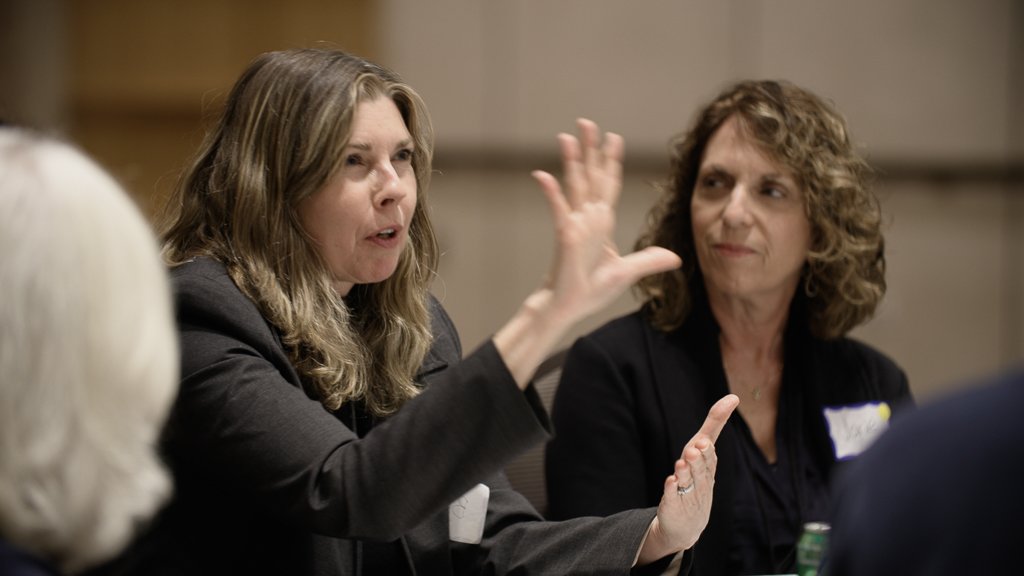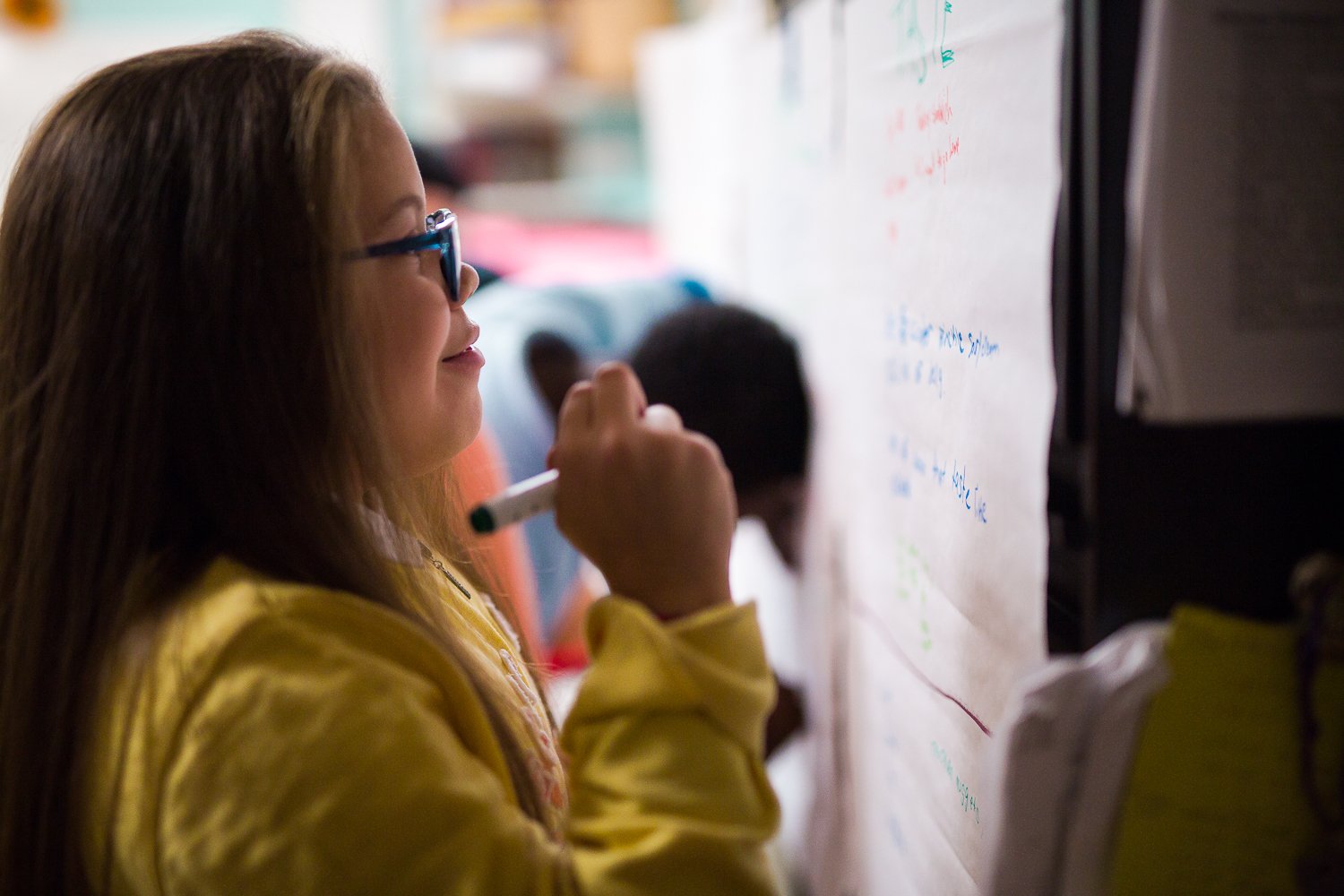
Strengthening Communities:
Designing for Belonging through the Arts
Rhetoric vs Action
The gap between talk about belonging and psychological safety on the one hand, and, on the other, the lived experiences of many in the US remains stark: As many as two-thirds of Americans report a lack of belonging in at least one aspect of their life. 64% in the workplace, 68% in their country, and 74% in their local community.
There is still a need for much action, guided by demonstrably effective strategies and principles.
What is Belonging?
The feeling that we are seen for who we are, accepted and valued as an equal.
This occurs with family, friends, school, workplace, local communities, country and places.
Belonging is a vital human need.
“Belonging is about the quality of fit between oneself and a setting,” write Nichole Argo and Hammad Sheikh. “When one belongs, they feel emotionally connected, welcomed, included, and satisfied in their relationships. They know that they are valued for who they are as well as for their contributions, can bring their whole and authentic self to the table, and are comfortable expressing their thoughts and opinions regardless as to whether they diverge from dominant perspectives. In addition, they understand how things work within a given setting, feel treated equally, and perceive that they are able to influence decisions”
According to Over Zero and the American Immigration Council, components of belonging include:
Feeling emotionally connected
Being welcomed and included
Perceiving that one is able to influence decision-making
Feeling able to be one’s whole and authentic self
Being valued as a person and for one’s contributions
Being in relationships that are as satisfying as one wants them to be
Feeling like an insider who understands how the environment works
Feeling comfortable expressing one’s opinions
Being treated equally
Feeling that one “truly belongs”

What are the costs of lack of belonging?
Lack of belonging is associated with
Reduced immunity and susceptibility to disease (1)
Shorter life expectancy (2)
Up to 70% more cognitive decline and dementia (3)
Lower motivation (4)
Less happiness (5)
Individual Health & Wellbeing
Lack of belonging is associated with
Decreased employee creativity (6)
Reduced job performance (7)
Lower retention rates (8)
More health complaints and missed days at work (9)
In the Workplace
Lack of belonging is associated with
Less satisfaction with people’s local community as a place to live
Eroded trust in fellow neighbors, local residents and local government (10)
Reduced civic engagement (e.g. in schools, social clubs, religious institutions, political and activist groups, neighborhood associations, etc)
Greater feelings of marginalization (11)
Less openness to difference, and interest in getting to know local residents different from one’s self (12)
Increased resistance to more people of diverse race, religion, or nationality to move to the neighborhood.(13)
This is especially alarming given the surge in incendiary speech and conspiracy theories stoking anxieties about demographic change linked with hate-crimes and violence (14)
Local Communities
National Politics
Lack of belonging is associated with
Less satisfaction with democracy and life in the US (15)
Greater support for non-democratic government (16)
ASC helps strengthen communities
Relationships in which people feel valued, understood, and worthy of full regard offer strong, enduring resilience to high conflict — dangerous reductions of complex people and situations into simplistic binaries, usually a distinct “us” vs monolithic, dehumanized “them,” whether Black vs White, Jewish vs Non-Jewish, etc.
ASC helps cultivate such relationships through story, stirring explorations of who people are and who they wish to be, building an understanding of how ‘the other’ has come to see what they see, believe what they believe and know what they know.
Sharing one’s story — and being heard — in dignified settings strengthens feelings of being valued for who one is. For speaker and listener, this validates and alleviates isolation.
Empathetic connections elevate in-common identities and experiences above socio-political, ethnic or religious differences (e.g. parents and parenthood; pain, loss, joy; we are all Americans, etc)
Listening to others’ stories, perspectives and experiences often illuminates assumptions, voiced and tacit about one another
Being open to and moved by each other’s stories can strengthen the conditions for people to generatively — and generously — disagree.
The more we are moved by a person’s story, the stronger the connection and the greater these impacts. To make certain people’s stories receive the dignity and attention they deserve, ASC taps our team’s decades of artistic/facilitation expertise on leading performing arts stages (Krannert Center for the Arts), international climate efforts (Red Cross-Red Crescent Climate Center, Hague) and race relations (National Endowment for the Arts’s Mere Distinction of Color).
Integrating artistic processes like theatrical projection with high-calibre live performance spotlights a greater breadth of people’s stories, including those who are often less heard or who do not consider themselves storytellers.
We combine this with principles and strategies from three generations of Mendilow’s family and social psychology research. Such research demonstrates that, when carefully timed, tailored, and targeted, even seemingly fleeting experiences can catalyze surprisingly long-lasting, even cascading, impacts.
“You cannot hate a person once you’ve listened to their story. ”
ASC Community Strengthening Programs Include:
-

In Our Words: Community Portrait Live Documentaries
In Our Words is driven by the conviction that everyone’s story matters and that we vitally need to hear more of one another’s stories.
In Our Words is a moving multimedia performance of real-world stories, candidly told by the people who’ve lived them through theatrical projections, together with live original narration, score and musical segments. In Our Words builds stirring community portraits made with, of, and for specific communities.
-

Listening Labs
Listening Labs are forums in which moving stories told through powerful spoken word, music, and theatrically projected sand animation facilitate generous listening with fellow participants in conversations that are honest, intimate, and alive.
-

StoryFIRE
Created for middle-school students, StoryFIRE strengthens young people’s leadership by honing storytelling skills through moving spoken word, music and hand-drawn animation.
StoryFIRE catalyzes relationships and understanding between student communities across ethnic, economic and linguistic differences.

These summaries draw on the comprehensive work of Argo and Sheikh in The Belonging Barometer: The State of Belonging in America.
See Argo, N., & Sheikh, H. (2023). The Belonging Barometer: The State of Belonging in America. American Immigration Council. https://www.americanimmigrationcouncil.org/research/the-belonging-barometer.
1. Summers, Juana, et al. “America Has a Loneliness Epidemic. Here Are 6 Steps to Address It.” NPR, NPR, 2 May 2023, www.npr.org/2023/05/02/1173418268/loneliness-connection- mental-health-dementia-surgeon-general.
See also Holt-Lunstad, J. (2021). Loneliness and social isolation as risk factors: The power of social connection in prevention. American Journal of Lifestyle Medicine, 15(5), 567–573. https://doi.org/10.1177/15598276211009454
2.Hawkley LC, Capitanio JP. Perceived social isolation, evolutionary fitness and health outcomes: a lifespan approach. Philos Trans R Soc Lond B Biol Sci. 2015 May 26;370(1669):20140114. doi: 10.1098/rstb.2014.0114. PMID: 25870400; PMCID: PMC4410380.
3. Holt-Lunstad, J., Smith, T. B., & Layton, J. B. (2010). Social relationships and mortality risk: A meta-analytic Review. PLOS Medicine, 7(7), Article e1000316. https://doi.org/10.1371/journal. pmed.1000316
4. James, B. D., Wilson, R. S., Barnes, L. L., & Bennett, D. A. (2011). Late-life social activity and cognitive decline in old age. Journal of the International Neuropsychological Society, 17(6), 998–1005. https://doi.org/10.1017/s1355617711000531
5. Walton, G. M., Cohen, G. L., Cwir, D., & Spencer, S. J. (2012). Mere belonging: The power of social connections. Journal of Personality and Social Psychology, 102(3), 513–532. https://doi. org/10.1037/a0025731
6. Saporito, T. J. (2012, February 15). It’s time to acknowledge CEO loneliness. Harvard Business Review. https://hbr.org/2012/02/its-time-to-acknowledge-ceo-lo#:~:text=Simply%20 acknowledging%20feelings%20of%20loneliness,scary%2C%20their%20responsibilities%20 can%20be
7. Goldberg, E. (2022, March 4). Why Your Boss Wants to Know Your Love Language. The New York Times. https://www.nytimes.com/2022/03/04/business/employee-satisfaction-remote- work.html; See also: Coqual. (2020). The power of belonging: What it is and why it matters in today’s workplace. https://coqual.org/reports/the-power-of-belonging/
8. A 2021 McKenzie report found that Not feeling recognized and valued by managers is a leading reason for quitting a workplace
See also: Goldberg, E. (2022, March 4). Why Your Boss Wants to Know Your Love Language. The New York Times. https://www.nytimes.com/2022/03/04/business/employee-satisfaction-remote- work.html;
See also: Coqual. (2020). The power of belonging: What it is and why it matters in today’s workplace. https://coqual.org/reports/the-power-of-belonging/ and Feelings of Seclusion and Not Belonging Plague Americans.” WTOP News, 12 July 2023, wtop.com/health-fitness/2023/07/feelings-of-seclusion-and-not-belonging-plague-americans/#:~:text=Around%203%20in%204%20people,around%2064%25%20in%20the%20workplace.
9. Carr, E., Reece, A., Kellerman, G., & Robichaux, A. (2019, December 16). The value of belonging at work. Harvard Business Review. https://hbr.org/2019/12/the-value-of-belonging- at-work
10. Ross, C., & Jang, S. (2000). Neighborhood disorder, fear, and mistrust: The buffering role of social ties with neighbors. American journal of community psychology, 28(4), 401-420. https://doi.org/10.1023/A:1005137713332; and, Sampson R., Raudenbush, S., and Earls, F. (1997). Neighborhoods and violent crime: A multilevel study of collective efficacy. Science, 277(5328), 918-924.
11. Argo, N., & Sheikh, H. (2023). The Belonging Barometer: The State of Belonging in America. American Immigration Council. https://www.americanimmigrationcouncil.org/research/the-belonging-barometer.
12. Johnson, S. (2020, February). A changing nation: Population projections under alternative immigration scenarios. Current Population Reports, US Census Bureau, 25-1146. https:// www.census.gov/content/dam/Census/library/publications/2020/demo/p25-1146.pdf. See also: Vespa, J., Medina, L., & Armstrong, D. (2020, February). Demographic turning points for the United States: Population projections for 2020 to 2060. Population Estimates and Projections, US Census Bureau, 25-1144. https://www.census.gov/content/dam/Census/ library/publications/2020/demo/p25-1144.pdf
13. Byman, D. (2021, April 9). How hateful rhetoric connects to real-world violence. Brookings Institution. https:// www.brookings.edu/blog/order-from-chaos/2021/04/09/how-hateful-rhetoric-connects-to- real-world-violence/
14. Peters, J., Grynbaum, M., Collins, K., & Harris, R. (2019, August 11). How the El Paso killer echoed the incendiary words of conservative media stars. New York Times. https://www.nytimes.com/interactive/2019/08/11/business/media/el-paso- killer-conservative-media.html
15. Argo, N., & Sheikh, H. (2023). (rep.). The Belonging Barometer: The State of Belonging in America. American Immigration Council. https://www.americanimmigrationcouncil.org/research/the-belonging-barometer.
16. Bartels, L. M. (2020). Ethnic antagonism erodes Republicans’ commitment to democracy. Proceedings of the National Academy of Sciences of the United State of America, 117(37), 22752-22759. https://doi.org/10.1073/pnas.2007747117.

